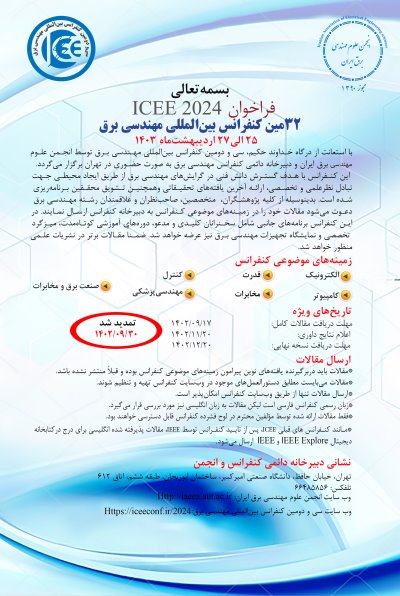0% Complete

نویسندگان :
کلمات کلیدی :
چکیده :
لیست مقالات بایگانی شده
Mojtaba Lahijanian - Hamid Aghajan
Negar Baradar Alizadeh - Mahmoud Momtazpour
Mohammad Hossein Bayati - Arman Marzban - Mahsan Tavakoli-Kakhki - Ali Naseh
علی ردانی پور - مسعود شفیعی
Arash Hodaie - Hassan Kaatuzian - Aref Rasoulzadeh Zali
Saba Nikseresht - Saeed Khankalantary
Ehsan Veisi - Mahmood Seifouri - Saeed Olyaee
Jalal Moradi - Hossein Shahinzadeh - Ahmad Hafezimagham - Gevork B. Gharehpetian - S.M. Muyeen - Mohamed Benbouzid
Mohammad Parsa Karimi - Abdollah Amirkhani - Shahriar B. Shokouhi
Zeinab Maroufi - Alireza Hadi Hosseinabadi - Reza Askari moghadam





